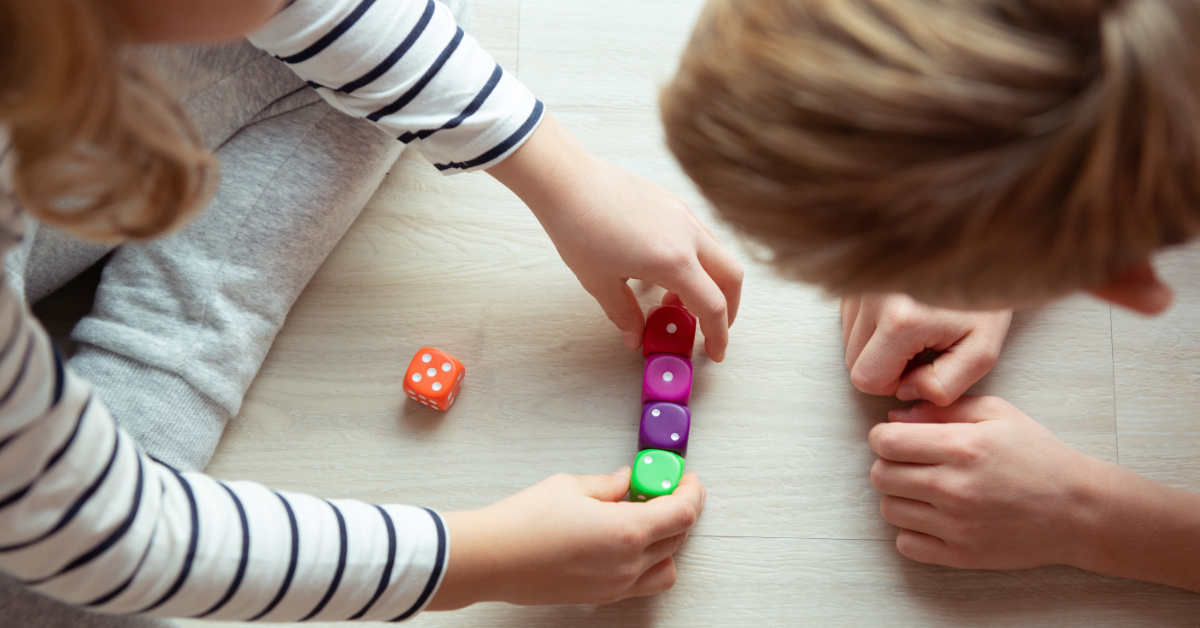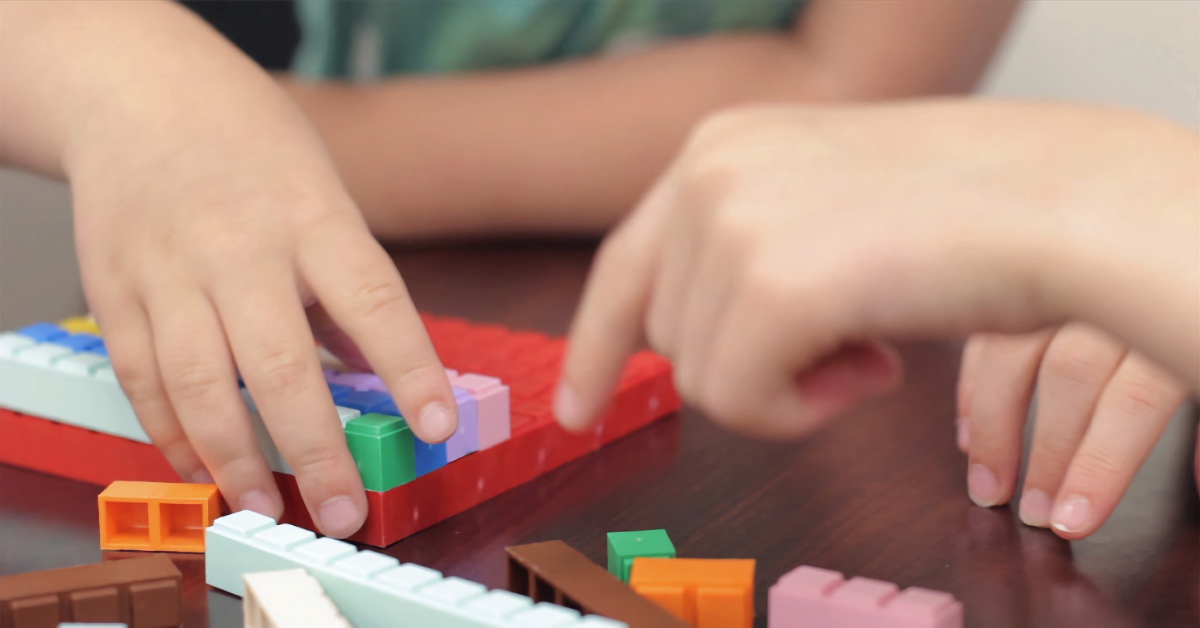
When it comes to having fun, math activities probably aren’t high on the list for most students or educators. For many people, “math fun” might seem like an oxymoron.
As long as math concepts are introduced using real-life applications, hands-on activities, and age-appropriate material, however, there’s no reason math class can’t be an enjoyable experience for everyone.
Whether it’s a family calculating their grocery budget or an astrophysicist applying advanced mathematical concepts, math skills are an essential part of life. As an educator, the math activities you choose can elevate your students’ critical thinking and make your classroom more inviting for math learning. And yes, they can even be fun.
Understanding the Importance of Fun in Math Activities
For many students, solving a math problem is a scary proposition. An estimated 20% to 25% of kids experience significant math anxiety.
From the time they enter elementary school, students’ negative perceptions of math are often reinforced by cultural attitudes and an emphasis on math drills over exploration. Overcoming these preconceived notions requires a change in perspective, which starts with approaching math in a fun way.
Turning math into an exciting adventure isn’t too hard with a little creativity. Using sidewalk chalk to draw different shapes, playing a card game to demonstrate how to put numbers in order, or using a tape measure to measure distance are just a few fun activities that can bolster a student’s motivation and desire to learn math.
Regardless of the subject, fun and purposeful activities contribute to meaningful learning experiences, and this is especially true for mathematics. One of the main reasons so many students loathe the subject is because they believe it is irrelevant to their lives and is, therefore, no fun.
Key Elements of Fun Math Activities
Fun math activities generally involve elements that counteract the negative associations students have with mathematics. A fun math activity should be:
Relevant to Real Life
When math involves real-world applications, it becomes less abstract and a more enjoyable experience, especially when it involves the manipulation of numbers or shapes. This is why handling money, playing board games, or creating artwork tend to engage students. These activities make math learning fun.
Interactive
When students work to solve puzzles, they’re engaging with geometry. When students play hide and seek, they’re practicing counting. Any interactive hands-on activity will engage students, especially if it involves entertainment or amusement. Incorporating mathematical concepts into physical education can also make math interactive. When students divide themselves evenly into two teams or calculate how many points they need to win, they’re learning math.
Varied
Drilling math facts is important, but if that’s all they do, students will start to feel trapped. Math games can be tremendously helpful when it comes to incorporating variety into the curriculum because there are plenty to choose from for all ages. One classic game for pre-schoolers, for example, is “Guess the Amount,” where students estimate the number of items in a jar or container. For middle school students and high school students, contests can bring out the competitive spirit, with two teams or two individuals vying for points by guessing the correct answer to a math question.
How to Choose Fun Math Activities with Educational Purpose
Above all, educators should select math activities that align with their students’ educational objectives. If teaching geometry, choose a fun activity related to geometry. If teaching about the order of operations, choose an activity that helps reinforce basic math operations.
Remember: reinforcing key math concepts is the main consideration when choosing fun math activities. Enjoyment certainly helps, but it’s important the activities tie into the broader picture and help the student apply math concepts.
Because math is so interconnected, there is some flexibility in what fun activities you choose. For example, geometry involves multiplication, so a geometry experiment that requires calculating the area of a rectangle will help students practice math skills for multiplication and geometry. These are the kinds of exercises that help students attain math mastery.
There is a delicate balance between having fun and retaining mathematical concepts. While it’s important that students have fun with math, it’s more important that they are able to demonstrate their full understanding of new concepts.
To that end, sometimes drilling and practice are necessary to strengthen mental math. In order to demonstrate proficiency, students need to be able to seamlessly recall math facts. This doesn’t mean drilling and practice can’t be fun, however. Interactive math activities can help provide a broader understanding of multiplication generally. Recalling that 5×7=35 demonstrates memorization but being able to prove it by adding 7 to itself 5 times demonstrates proficiency.
Examples of Fun and Purposeful Math Activities
For more than one student, games are probably the most engaging and exciting math activities; however, some activities are appropriate for individuals, as well.
Here are a handful of fun math activities:
Math Baseball
There are several ways to play math baseball. In each case, students will want to draw a baseball diamond. Players can use markers, such as coins to track the progression of their players. For teams, the game is played with a “referee” calling out math questions. For individuals, two students roll dice, and no referee is necessary.
In each case, scoring is similar, although gameplay differs slightly. The number of “innings” in the game is set at the outset. There are three “outs” per inning., with each wrong answer resulting in an “out.” Each correct answer constitutes a “hit” and a progression to the next base. Players who round the bases get a “run,” and the player or team with the most runs at the end of the game is the winner.
For the two-player version, each student rolls two dice for each “at bat,” and, depending on the math concepts being learned, each number on the die constitutes a number in an addition, subtraction, multiplication, or division equation. If a player answers with the correct sum, difference, product, or quotient, they get a “hit.” If the answer is wrong, they get an “out.”
While there are many other ways to play, these are the basics. The repetition of questions in math baseball helps students recall facts and hone their problem-solving skills. The game’s competitive aspect makes it fun for everyone.
Math Bingo
Before the game begins, students or educators will want to create bingo cards for each player. Each bingo card will be different, but the numbers on the bingo cards will correspond to answers to math problems announced in a random fashion. Students will need to quickly calculate the answers on scratch paper or in their minds before blocking a square on their bingo card. Beyond this mathematical twist, all the other rules of bingo apply.
What’s particularly nice about math bingo is that it is suitable for all grade levels, since it can be as elementary or as advanced as the lesson it helps to teach. For more advanced games, however, the “caller” will probably want to provide an appropriate amount of time between announcements for the calculation of answers to take place.
Board Games and Card Games
Dozens of games require math knowledge. Games like Candy Land and Connect 4 are perfect for young students learning to count, add, and subtract. More advanced games, such as Monopoly, poker, and Gin Rummy, can help older students add an element of strategy to their math knowledge.
Participating in the Economy
Ask students to calculate tax, change, and tips at stores or restaurants. If they calculate the answers correctly, give them money to pay for the products or services.
Mapping a Geographic Area
Make a map of your house, measuring the lengths of each room and calculating the areas. You can extend this activity further to your neighborhood or town.
Baking and Cooking
Preparing meals provides many opportunities for real-life math activities. Cooking and baking require a sequence of steps, which can be correlated to the order of operations. Measuring ingredients helps with fractions, especially when multiple batches are required or recipes need to be segmented or halved. Weight, symmetry, and unit conversion all build critical thinking skills and help solve math problems.
Computer Programming
For students interested in computers, writing computer programs that illustrate mathematical concepts is a fun way to sharpen their math skills. For example, they could write a function that calculates factorials or determines whether a number is prime.
Integrating Fun Math Activities into Different Learning Environments
Students may learn math in different settings, such as homeschooling, traditional classrooms, and online learning. Many of the math activities we’ve touched on can be incorporated into any setting with some minor modifications.
One factor to consider is the number of students involved. In smaller groups with just a handful of students, educators can work directly with them, giving each student individual attention. For larger groups, this may not be an option. Instead, an educator can demonstrate the activity for the rest of the class with one or two students and then have the class split into groups to perform the activity. The instructor can then walk around the room, monitor each group, and offer assistance or guidance when necessary.
Another factor is available materials. Be creative with what you have on hand. For example, you could use paper cutouts to simulate baking ingredients or coins. Virtual classrooms are especially limited this way, so choose activities that can be easily adapted to screens.
Embracing the Joy of Learning Math
Integrating fun and purposeful activities into math lessons not only combats math anxiety but also promotes a deeper understanding and appreciation for mathematics. From math baseball to baking, these activities show math is not only essential but enjoyable, too.
By carefully selecting activities that are both entertaining and educational, educators can help students see math in a new light, sparking curiosity and a lifelong love of math. Engaging students in meaningful, enjoyable math activities paves the way for their success in mathematics and beyond.
Want more math resources? Check out The Guild! This free archive provides resources for building math skills and learning math facts.




Leave a Reply